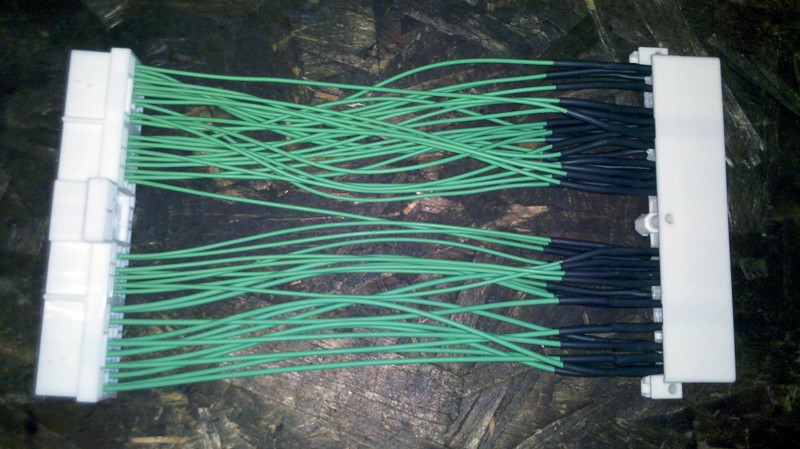For automotive enthusiasts and mechanics diving into engine modifications, particularly with older Nissan models or SR20DET engines, the topic of ECU conversion often arises. One critical component in this process is the OBD2 to OBD1 jumper harness. This article will explore what this harness is, why it’s essential, and how it simplifies the transition between different On-Board Diagnostics (OBD) systems.
Understanding OBD2 to OBD1 Jumper Harnesses
An OBD2 to OBD1 jumper harness, also known as a conversion harness, is an adapter that bridges the gap between a vehicle originally equipped with a second-generation On-Board Diagnostics system (OBD2) and an older, first-generation system (OBD1). This harness essentially reroutes and translates the wiring connections, allowing an OBD1 Engine Control Unit (ECU) to be plugged into an OBD2 vehicle’s wiring system without requiring extensive and complicated rewiring.
Why Use an OBD2 to OBD1 Jumper Harness?
The primary reason for utilizing an OBD2 to OBD1 jumper harness stems from the desire or necessity to use an OBD1 ECU in an OBD2 vehicle. This is commonly seen in scenarios such as:
- Engine Swaps: When installing an older engine (OBD1) into a newer chassis (OBD2), a jumper harness simplifies ECU integration. For example, someone installing an SR20DET engine from a Nissan S13 (OBD1) into an S14 or S15 (OBD2) might use this harness.
- ECU Tuning and Management: OBD1 ECUs are sometimes preferred for certain types of engine tuning or when using specific aftermarket engine management systems. In some cases, tuning options and software availability might be more mature or affordable for OBD1 ECUs compared to their OBD2 counterparts.
- Simplified Wiring for Performance Modifications: For advanced users and tuners, utilizing an OBD1 ECU in an OBD2 car can streamline the wiring setup, especially when aiming for standalone or piggyback ECU configurations for performance enhancements.
Key Features of Quality OBD2 to OBD1 Jumper Harnesses
When selecting an OBD2 to OBD1 jumper harness, quality is paramount to ensure reliable performance and prevent electrical issues. Key features to look for include:
- New Connectors and Wiring: High-quality harnesses use brand new connectors and wiring, ensuring optimal conductivity and longevity. This avoids potential issues associated with used or low-grade materials.
- Plug-and-Play Design: A well-designed harness should be truly plug-and-play, minimizing installation time and complexity. It should directly connect to the existing OBD2 connectors in the vehicle and the OBD1 ECU without requiring wire splicing or modification.
- Durability and Reliability: The harness should be constructed to withstand the harsh automotive environment, including temperature variations, vibrations, and exposure to fluids.
Conclusion
The OBD2 to OBD1 jumper harness is an indispensable tool for simplifying ECU conversions in automotive projects, particularly for enthusiasts working with Nissan vehicles and SR20 engines. By providing a straightforward, plug-and-play solution for adapting older OBD1 ECUs into OBD2 systems, these harnesses save time, reduce wiring complexity, and facilitate various engine tuning and modification endeavors. When considering an ECU conversion, investing in a quality OBD2 to OBD1 jumper harness is a smart move towards a smoother and more reliable outcome.
